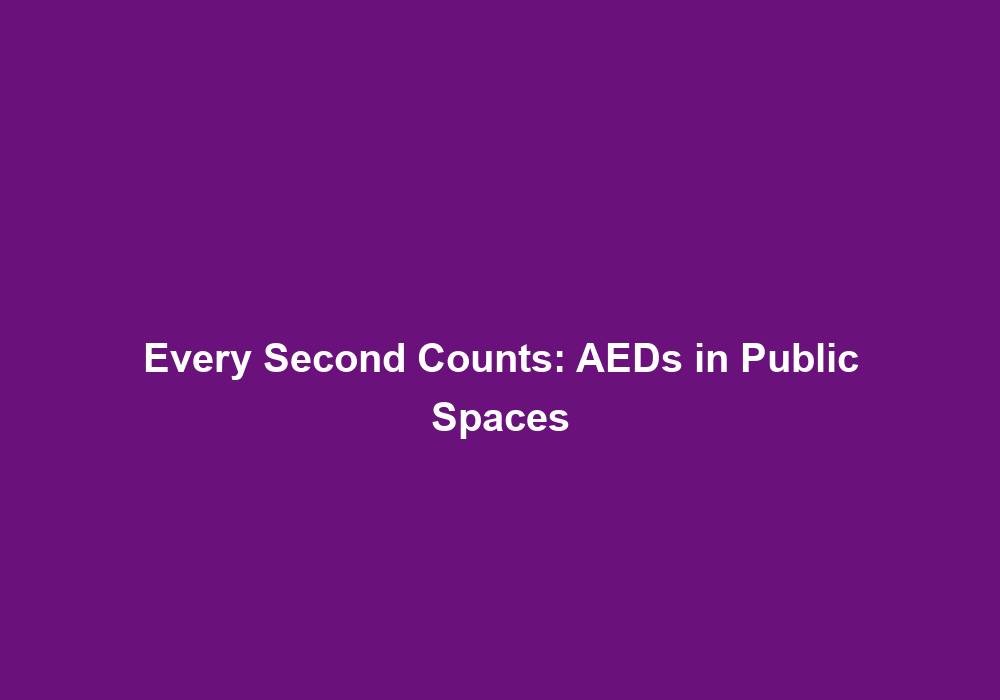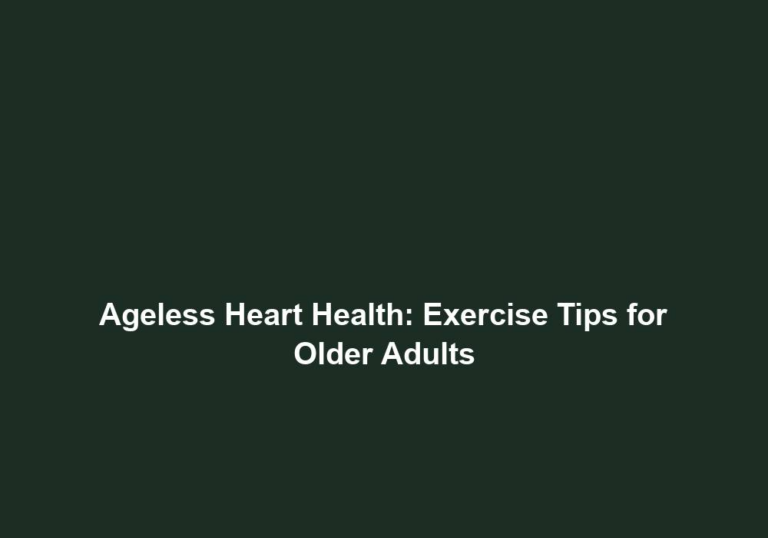Every Second Counts: AEDs in Public Spaces
Introduction
In today’s fast-paced world, every second counts when it comes to saving a life during sudden cardiac arrest (SCA). That’s where Automated External Defibrillators (AEDs) play a crucial role. These portable devices are designed to provide immediate defibrillation to individuals experiencing SCA in public spaces. In this article, we will explore the importance of AEDs in public spaces and how they can make a life-saving difference.
A sudden cardiac arrest is a life-threatening medical emergency that requires immediate attention. According to the American Heart Association, every minute without defibrillation decreases the chances of survival by 7-10%. This emphasizes the need for rapid response in such situations. Having AEDs readily available in public spaces can significantly reduce response times and increase the chances of survival. The proximity of AEDs to areas where people congregate, such as malls, airports, stadiums, and schools, ensures that life-saving equipment is accessible when needed the most.
The Need for AEDs in Public Spaces
-
Rapid Response: Sudden cardiac arrest can strike anyone, regardless of age or gender, and it often occurs unexpectedly and without warning. Public spaces witness a high volume of people daily, making them potential locations for cardiac emergencies. By placing AEDs in these areas, we ensure prompt access to life-saving equipment. Immediate defibrillation through AEDs can restore a normal heart rhythm, increasing the chances of survival.
-
High Occurrence of SCAs: The occurrence of sudden cardiac arrest is more common than many people realize. It is a leading cause of death worldwide. Placing AEDs in public spaces is crucial due to the high volume of people who frequent these areas. Whether it’s a busy shopping center or a crowded sports stadium, having AEDs strategically located ensures that life-saving intervention is available within minutes, potentially saving countless lives.
-
Role of AEDs in CPR: While cardiopulmonary resuscitation (CPR) is a vital emergency procedure that keeps blood flowing to the brain and other vital organs, it alone cannot restore the normal heart rhythm. AEDs, however, can analyze the heart’s rhythm and deliver an electrical shock if necessary, thereby increasing the chances of restoring a normal heartbeat. The combination of CPR and AED use significantly improves the chances of survival for individuals experiencing sudden cardiac arrest.
The Effectiveness of AEDs
-
Ease of Use: AEDs are designed to be user-friendly, even for individuals without medical training. They come with clear instructions and voice prompts that guide users through the entire process. These devices have built-in algorithms that analyze the heart’s rhythm and determine if a shock is needed. This simplicity ensures that more people can confidently use AEDs in emergency situations. With minimal training, bystanders can effectively operate AEDs and provide life-saving assistance until professional help arrives.
-
Increased Survival Rates: Numerous studies have consistently shown that early defibrillation through AEDs can significantly increase the chances of survival for individuals experiencing sudden cardiac arrest. In fact, the American Heart Association estimates that using an AED within the first three minutes of cardiac arrest can improve survival rates by up to 70%. By reducing the time it takes to deliver defibrillation, AEDs play a critical role in saving lives.
-
Accessibility: AEDs should be strategically placed in easily accessible locations within public spaces. They should be highly visible and accompanied by clear signage. By ensuring their visibility and availability, we empower bystanders to intervene during a cardiac emergency, providing potentially life-saving assistance until professional help arrives. Additionally, AED cabinets should be equipped with easy-to-follow instructions and be accessible to individuals in need, as time is of the essence in cardiac emergencies.
Implementing AED Programs in Public Spaces
-
Training and Education: While AEDs are designed to be user-friendly, basic training in their operation and CPR can further enhance their effectiveness. Public spaces should consider offering CPR and AED training programs to employees and staff members. This training equips them with the necessary skills and confidence to respond promptly during a cardiac emergency. By educating individuals on the importance of AEDs and providing them with the knowledge to use these devices effectively, we can save more lives.
-
Maintenance and Monitoring: AEDs should be regularly inspected, maintained, and monitored to ensure their functionality. Public spaces must establish protocols for routine checks, battery replacements, and device readiness. Additionally, automated monitoring systems can be implemented to alert administrators when an AED’s battery is low or if there are any malfunctions. Regular maintenance and monitoring are crucial to ensure that AEDs are always in optimal condition and ready for immediate use.
-
Coordination with Emergency Services: Public spaces should establish a strong partnership with local emergency services to ensure a seamless response to cardiac emergencies. This collaboration can include regularly updating emergency contact information, providing key access codes to AED cabinets, and sharing incident reports for continuous improvement. By working closely with emergency services, public spaces can enhance the effectiveness of their AED programs and ensure a coordinated and efficient response to cardiac emergencies.
AED Regulations and Legal Considerations
-
Compliance with Laws and Regulations: When implementing AED programs, public spaces must adhere to local laws and regulations. It is crucial to consult with legal experts to ensure compliance with any requirements specific to the jurisdiction where the AEDs will be placed. By complying with regulations, public spaces can ensure the legality and effectiveness of their AED programs.
-
Good Samaritan Laws: Many jurisdictions have enacted Good Samaritan laws that provide legal protection to individuals who render aid during an emergency. These laws encourage bystanders to take action without fear of legal repercussions, further promoting the use of AEDs and CPR in public spaces. Understanding and abiding by these laws can help create a supportive environment where bystanders feel empowered to assist during sudden cardiac arrests.
Conclusion
Every second counts during a sudden cardiac arrest, and having AEDs readily available in public spaces can be a matter of life and death. These portable devices, with their ease of use and effectiveness, can significantly increase survival rates. By implementing AED programs, providing training, and ensuring proper maintenance, public spaces can become safer environments where bystanders have the power to save lives. Let us prioritize the placement and accessibility of AEDs, ensuring that every individual has a fighting chance in the face of sudden cardiac arrest.







